Are you meeting the needs of your male clientele? I’m not talking about your saw palmetto or your bodybuilding supplements. I’m talking about your hair and skin care products.
A few years ago, you may have gotten away with just offering some natural bar soap and shaving cream. But, times have changed. More and more men are looking for specialized skin, body and hair care products so they can look and feel their best. If you haven’t considered whether your male clientele will feel at home in your personal care aisles, you could be missing out on an important developing niche market.
Just for Men: Not Just a Gimmick
Some shoppers may be suspicious that men- or women-specific products are really the same formula, just different scents and packaging. Experts weigh in on this issue with some interesting insight.
According to Kim Wells, personal care brand manager for NOW Foods, Bloomingdale, IL, “In many ways it is about scent, but there are some functional differences.”
Devon B. Katzev, president of Straight Arrow Products, Inc. (makers of Conceived by Nature and the Original Mane ‘n Tail) agrees and says that in the aisles of a pharmacy or big box store, fragrance and appearance sell products.
But it’s not just a superficial choice in the natural realm. Katzev notes this important distinguishing factor: “In the natural realm, it’s nature at its best. So, the fragrances are less gender specific and serve more of a purpose for your health.”
Essentially, your male clientele won’t be happy for long if they buy a men’s product in your store that doesn’t do the job it promises to do or if its ingredients aren’t completely clean. Says Katzev, “At the end of the day if the formula is not pH-balanced and doesn’t perform, then what’s the point?”
Eileen Sheets, managing director of Bioforce USA, Ghent, NY, is in agreement. She asks, “The bigger issue is not whether it is formulated for a man or a woman, but is it truly a well formulated product? Are all the ingredients really safe and effective? Does the formulation take advantage of the synergy between ingredients? Is the formula really stable? Will it be as active when the customer uses it as it is when produced?”
Getting back to Wells’s point, there are some good reasons to have men- or women-specific personal care items as there are anatomical differences that matter in skin care and hair care.
Men’s versus women’s skin. According to the International Dermal Institute (IDI), both genders face skin/hair issues like dryness, oiliness, sensitivity, aging and more (1). But hormonal differences account for how these problems present themselves. For instance, testosterone levels are significantly higher in most men than in most women. As males get into their 40s and 50s, their testosterone levels tend to drop, w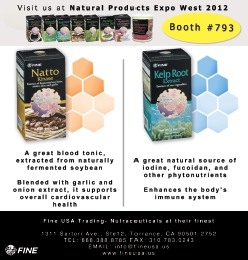 hich could affect their hair and skin.
hich could affect their hair and skin.
States Wells, “Testosterone in a man under the age of 50 can cause the skin to be oilier and this helps them ‘age better’ in the long run.”
There are other factors, too. Men’s facial hair being coarser, more pigmented and more plentiful than women’s offers some ultraviolet protection, says IDI. The group states, “The damaging UV rays are not able to penetrate through a beard to the dermis and cause collagen degradation. It is no surprise then, that shaving greatly increases the risk of UV damage and premature aging. Moreover, fair-skinned men with finer hair will display photo-damage more easily than their darker-skinned counterparts, much like women.”
IDI also feels that men’s testosterone levels give males some protection from collagen and elastin degradation (which means the skin is slower to show signs of aging). Men’s skin also tends to be a little thicker.
Despite these factors, men have a greater incidence of skin cancer than women. Retailers can use this information to encourage men to use natural sun protection. And, let them know that their skin can be naturally very sensitive despite its thickness due to shaving and other factors.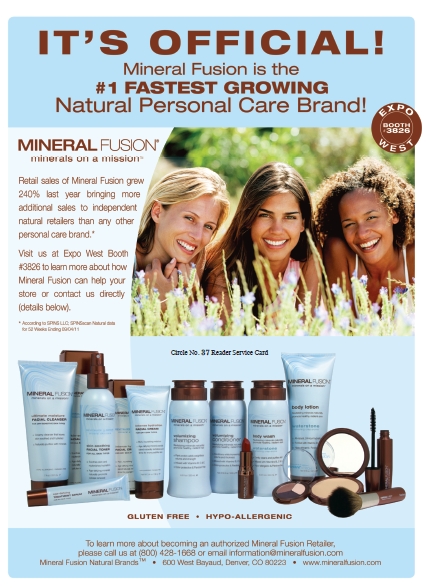
“The more a man shaves, the more sensitive his skin can become over time,” says Wells. For this reason, fragrance-free products may be appealing to male shoppers. “For men who shave more often and have developed more sensitive skin, a stronger fragrance—natural or not—can cause unwanted irritation,” she feels. “Plus, most men don’t want to smell like they use women’s products.”
She explains another issue that plagues some men: ingrown hairs on the face. Thanks to repeated shaving, these hairs basically U-turn into the skin and get trapped, causing inflammation and discomfort. For this, Wells recommends a gentle scrub such as that offered by her company (Vitamin C & Oryza Sativa Gentle Scrub).
Another factor in men’s skincare, according to IDI, is that men’s testosterone and DHT levels may make wound healing slower. This means that a gentler natural product may be especially suitable for men. Says Katzev, “Your choices in life impact the way you look and feel. Eating natural foods and using natural products are definitely a plus.”
Neem and other essential oils may be especially suited for men with sensitive skin who shave, says Trinity Ava, herbalist and director of education for Organix-South, Bowling Green, FL. In her company’s men’s products, “We utilize neem leaf and oil and other herbs and essential oils that will help to address the c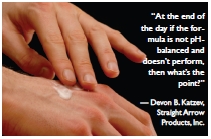 ommon issues a man may have with his skin,” says Ava.
ommon issues a man may have with his skin,” says Ava.
She adds that cedarwood and fir needle oils may be appropriate for men’s shaving products: “Both essential oils have been traditionally used to stimulate and support healthy skin, protect the skin and address minor irritations, such as those caused by shaving, as well as offering their uplifting and more masculine aroma.”
Another common thought about men’s skin is that it doesn’t tend to be as dry. Stephen Strassler, president of Reviva Labs, Haddonfield, NJ, explains, “Men’s skin is reported to produce more oil than women’s, so their skin is generally less dry.”
So, how do all these anatomical differences play out on the shelf? Savvy formulators take it all into account. Let’s use Reviva Labs as an example. According to Strassler, the company’s Alpha Lipoic, Vitamin C Ester & DMAE Cream has two versions distinctly formulated and packaged for each gender. “For men, there’s a special fragrance—but it’s more than that. The man’s formula is more geared for surface action; correction of surface deficiencies,” says Strassler.
He adds, “The women’s cream is formulated for deeper absorption than the men’s. The woman’s formula has richer oils; the man’s formula has more refined oils.”
But don’t forget that every customer is an individual and has different needs. States Kirsten Corcoran, founder and product manager of Larenim cosmetics & skin care, Worthington, OH, “Sensitivity and oiliness are dominantly determined by one’s age, genetically pre-determined skin type and living environment. Men can have dry, sensitive skin and women can have oily, non-sensitive skin. I formulate products based on that premise.”
Hair care. One of the most commonly thought of differences between men’s and women’s hair is that men’s hair often thins over time. In fact, many hair-loss products are geared toward men. But this is somewhat of a misnomer. Women can also experience thinning hair, while some men don’t. Again, it’s often a matter of genes and hormones. For instance, the hormone dihydrotestosterone (DHT) can cause hair follicles to contract and die over time. The result is pattern baldness.
Retailers can help both genders better understand premature hair loss. Wells pinpoints a few ingredients that might help. These include rosemary and ginger, which act as hair stimulators. Horsetail, sage or silica may help to thicken the hair. “There are products that can be used topically or internally, some of them may minimize the appearance of fine, thinning hair by building the volume of the hair that is left,” she states. “To figure out what works best individually, it will depend on what caused the initial hair loss.”
Ava raises the point that thinning hair or balding isn’t necessarily a bad thing. She states, “ I hope a day will come when we can better praise the beauty of bald or thinning hair for men and women, recognizing that we are who we are and that true beauty comes with thick and thin hair!”
She admits, however, that many people are not happy with losing their hair, and agrees with Wells that some herbs and fatty oils can help. “For thousands of years, we, humans, have turned to herbs and essential to help stimulate hair growth topically and they can be very supportive for some when incorporated as part of a holi stic protocol.”
stic protocol.”
Like Wells, Ava favors rosemary oil for hair health and also adds these stimulating and balancing herbal oils and essential oils to the list: eucalyptus, lemon, lavender and rose geranium. Also, she feels one should not overlook the benefits of neem oil for supporting healthy hair, scalp and hair growth. Ava states, “Neem oil is prized for its ability to cool and calm, feed and nourish even the most sensitive scalps and is useful to promote healthy hair and hair growth.”
Neem oil is used in many finished products, but it can also be used in its essential oil form. Ava recommends adding three to four droppers to a shampoo or mixing the same amount with enough olive oil to saturate the hair and scalp. One can also add one of the aforementioned essential oils for scent (no more than 10 drops of all oils per application).
Advises Ava, “Massage either combination vigorously into hair and scalp and leave on the hair for 30 minutes to an hour. Wash and condition with TheraNeem Shampoo and Conditioner. Repeat either process once a week or as needed.”
Another tip is that shoppers concerned about hair loss can choose hair products that only use gentle surfactants such as: Coco Glucoside, Decyl Glucoside, Sodium Lauroyl Lactylate.
There are some other issues Ava wants us to keep in mind: tell shoppers to resist the temptation to over-wash. “If you are trying to ‘kick’ the shampoo everyday habit, feeding the hair and scalp additional nourishing neem oil and olive oil will help to balance oil production for oily, dry or sensitive scalps,” states Ava.
She adds that dandruff, too, plays into this. Constant hair washing may be a contributing factor in the rise of fungal-based dandruff. “The days of lather, rinse and repeat are sooo the 20th century…We, as a species, are not meant to constantly be squeaky clean,” says Ava. “In my opinion and experience, the action of being overly squeaky clean is one of the leading causes of hair loss and many other common skin issues.”
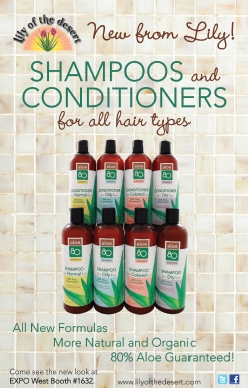 The reason for lessening the frequency of hair washing is that shampooing strips away the protective oil on our hair and scalp that nourishes and protects them—and serves as a barrier to bacteria.
The reason for lessening the frequency of hair washing is that shampooing strips away the protective oil on our hair and scalp that nourishes and protects them—and serves as a barrier to bacteria.
Now, what about other products like hair coloring? This female-dominated category definitely has some mainstream products that are marketing as being just for men. Some would argue that aside from the gender of the model on the box and the marketed messages, there are few differences between the two.
In the natural arena, Sheets says that for the most part, the nuts and bolts of a men’s or women’s hair dye or bleach is basically the same. This is because the reasons for using such a product are the same: “The usual reason for using hair color is to cover grey or brighten your own color,” she states, noting that her company’s fragrance-free hair colors work equally well for men’s or for women’s hair. Sheets states that she has spoken with numerous men who use her firm’s hair colors, and, based on customer service phone calls, “I would have to say that most men are not shy about purchasing and using the same color women use.”
Tapping into Special Needs
Of course, there are some special needs among the genders, and some companies are making a concerted effort to meet them. For instance, a newly launched line called STUF Men’s Defense (distributed by derma e) explains on its Web site why it developed its products: “The fact is, society has loosened up a bit in recent years and it is now universally accepted and a stated fact that men take care of their skin…Across the planet, men’s products are popping up overnight. Most of them, though, are just women’s products re-worked with a different scent and new, manly packaging. At STUF, we think that’s simply not good enough.”
For instance, its after-shave balm is said to be more up-to-date and less astringent than traditional products.”It cools, calms and soothes irritated skin. Balms combat redness and razor burns and help to reduce blemish flare-ups,” the company states. The line has several other products including a two-in-one shampoo and conditioner, a facial scrub, shaving gel and more.
Also new on the U.S. market are Bulldog Natural Skincare products. The firm invites men to “reclaim the bathroom cabinet.” Bulldog states on its Web site, “It seems that even when they’re ‘our’ products, they’re just her brands with a different label. Bulldog Skincare has been specifically formulated and designed for men.”
These new brands are clearly taking into account that many men and women have different needs. For instance, Wells believes women are generally more accustomed to taking care of their skin and don’t mind multi-step routines.
On the other hand, she says, “Most men want it simple, but it depends on how familiar the individual male consumer is with personal care products. If they are new consumers to personal care I always recommend multi-functional products and only two to start out with. If they are not familiar with a routine, too much at once can scare them away from using the products, so you want it manageable to support a repeat purchase.”
Perhaps this is why companies are launching two-in-one men’s hair care products and shave products that moisturize while facilitating shaving. STUF even offers a combined hair and body wash.
Another distinction between products marketed to specific genders comes from Jason Sepp, vice president of marketing at ShiKai Products, Santa Rosa, CA. He says women’s products are more likely to be labeled as “anti-aging,” whereas the male skincare market is dominated by “functional skincare.” He states, “In this case, ‘functional’ would mean benefit-driven products targeted for specific skin issues such as dry skin, oily skin, rosacea, dermatitis, etc. On the other hand, women’s skincare is still dominated by cosmetic anti-aging products selling ‘hope and beauty’ in tandem with actual benefits.”
Though there are certainly exceptions to the rule, it may be beneficial for your sales team to note this observation from Sepp. He adds, “The market may be changing as male baby boomers age, but it still appears that men gravitate to fundamentally different marketing. Or perhaps, no brands have figured out what type of marketing works for men.”
With marketing, we can’t ignore the packaging, and many males prefer a product that looks like it’s intended for men. Says Corcoran, “Men want many of the same skincare attributes as women…but without the features that overtly feminize the product.” These include the products’ looks and names.
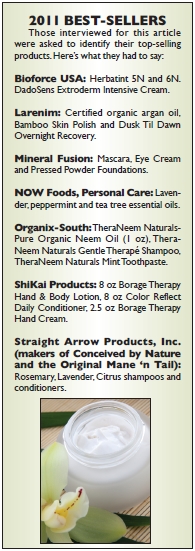 In agreement is Tim Schaeffer, senior vice president of marketing for Mineral Fusion, Petaluma, CA, who states, “There’s really a lot of overlap, particularly in terms of anti-aging and skin protection. However, men tend to like no fragrance or more masculine fragrances.”
In agreement is Tim Schaeffer, senior vice president of marketing for Mineral Fusion, Petaluma, CA, who states, “There’s really a lot of overlap, particularly in terms of anti-aging and skin protection. However, men tend to like no fragrance or more masculine fragrances.”
Men and Women in Your Store
To ensure your personal care section is appealing to both sexes, experts have some retailing tips. Sepp suggests you experiment with how you present men’s products to see what works and what doesn’t. He states, “People laugh at Unilever’s Axe brand, but they’ve been extremely successful reaching a very difficult target.” Those commercials are somewhat suggestive, showing women who are very attracted to men that use the line. Sepp continues, “There might be some ridiculous macho man natural brand out there waiting for a shot on the shelf. It’s easy to mock this type of marketing, but you never know what will work!”
As far as layout, Wells feels that men’s products should all be placed together, so they can be easily found. Sheets suggests one could also integrate the two genders and then divide products by skin type. However you shelve them, being sure to place men’s and women’s products in a “clean, attractive area for personal care with well-maintained testers is key,” says Wells.
Last, don’t forget that efficacy drives sales. Sepp adds, “In our world of natural, we have a tendency to be side-tracked by the features of a product (is it organic, what are the botanicals inside, does it smell nice, etc.) rather than what the product actually does. When dealing with real skin and scalp problems, consumers (both natural and mainstream) will ultimately make purchase decisions based on benefits, not features.” WF
Reference
1. C. Aguirre, “Understanding Male Skin,” www.dermalinstitute.com/uk/library/73_article_Understanding_Male_Skin.html, accessed Jan. 26, 2011.
Published in WholeFoods Magazine, March 2012










